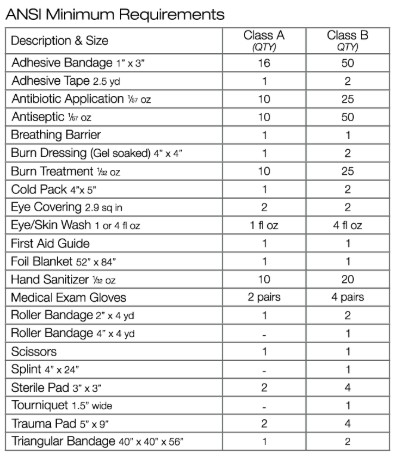Breadcrumb
Environmental Health & Safety
EH&S Home
EHS, as part of Risk Management & Safety Services, works with the staff and faculty of Cal Poly Humboldt to provide a safe and healthful workplace. EHS develops and implements various programs in order to minimize the risk of occupationally related injury or illness. This is accomplished through integrated steps of hazard identification, evaluation, and control, employee training and incident/accident investigation. In addition, EHS is a resource for information and technical guidance on occupational safety and environmental health information, work practices, regulations, etc. Please feel free to contact us regarding any safety questions.
Storm Water Task Force
The Storm Water Task Force Committee will identify and prioritize the storm water projects needed on and around Cal Poly's campus facilities and related to implementation of the Campus Phase II MS4 permit, including upkeep of LIDs, education and outreach, identification of impacts to storm water such as leaking vehicles, pollutant generating activities like trash, sediment, etc. and Best Management Practices (BMPs) to reduce impacts.
Seasonal Information
Mosquitos, fleas, and ticks bites which cause illness or disease have tripled from 2004 to 2016. Visit their website for more information on how to protect yourself:
cdc.gov/vitalsigns/vector-borne/index.html
The Centers for Disease Control and Prevention gives detailed information for "What to do when you have the flu?" Please visit their website for more information:
Environmental Health
The environmental health function of EHS oversees a wide spectrum of programs focused on the protection of the local environment. Programs include hazardous waste management, medical waste management, Hazmat business plan chemical inventory, emergency response to hazardous materials releases and compliance oversight of storm and waste water programs.
Training classes are provided for employees and, at a minimum, include hazardous and medical waste management, bloodborne pathogens control, hazard communication, best chemical inventory management practices, emergency response to chemical releases and general lab safety.
The division also acts as the liaison with various regulatory agencies to insure campus wide compliance with federal, state and local environmental health regulations. To promote compliance, EHS conducts routine inspections and notifies departments of required corrections.
Occupational Safety
The Safety program focuses on the identification, evaluation, and control of hazards in the workplace. It is inherently broad in its scope covering items such as work area safety surveys, accident/incident investigations, electrical safety, indoor air quality, ergonomics, hand and power tool safety, personal protective equipment, injury prevention plans, construction safety, chemical and noise exposure assessments, radiation safety, respiratory protection, back/lifting safety, safety training and numerous other related topics. EHS identifies the applicable regulatory requirements, develops compliance programs to meet the requirements, and then provides consultative direction and technical support to departments to implement the safety programs pertinent to their department.
First Aid Kits
First aid kits are not required on campus, however many departments and offices wish to have them available in case of small incidents.
Cal-OSHA and Fed OSHA does not have a minimum requirement, but references ANSI Z308.1-2021 Minimum Requirements for Workplace First Aid Kits. According to the ANSI document there are two types of first aid kits: Class A and Class B.
- Class A first aid kits are designed to deal with the most common types of workplace injuries, such as an office or classroom setting.
- Class B first aid kits are designed with a broader range and quantity of supplies to deal with injuries in complex or high-risk environments, such as a construction, laboratory, or outdoor field work setting.
Classes of First Aid Kits & Required Supplies
ANSI Z308.1-2021, Table 1

Policies & Exclusions
Oral medications are not included in this list. Over the counter medicines are not recommended items due to risk of allergic reaction unless specified by a consulting physician.
Employees cannot purchase any type of medication that can be administered orally using university funds or for university business. This is especially relevant if the intent was to share with students. This includes everyday medication such as pain relievers and antihistamines.
If first aid kits are purchased that include any stated above, they must be removed from the kit before being distributed to employers/students.
Please contact Risk for requested exemptions for review. Using personal funds from grants are not supported by the university unless explicitly approved through risk.
Supplies in your first aid kit should be based on the work hazards and number of people. The list above only lists the minimum amount of supplies. If you are unsure of your workplace hazards, perform a job hazard analysis (JHA). JHAs can be done through EHS.
First aid kits are to be used by the injured party on a voluntary basis. If another person is to administer first aid, we recommend that they should be adequately trained by equal to that of the American Red Cross in first aid response.
Best Practices
First aid kits shall be inspected at least quarterly and after every first aid/medical event to ensure completeness, condition of supplies and to replenish supplies beyond their expiration date. Expired items should be removed and replaced with new items.
Rubberized supplies should be made of natural rubber, synthetic latex and other hypoallergenic material such as nitrile to reduce risk of an allergic latex reaction.
Staff
| Name | Title | Phone Extension |
|---|---|---|
| Cris Koczera | Director of Risk Management & Safety Services | 4635 |
| Xena Pastor-Nuila | Interim Director of EH&S/Emergency Mgmt. | 5711 |
| Tianna Nourot | EH&S Analyst | 3305 |
Office Location
Risk Management and Safety Services is located in the Student & Business Services Building, at the corner of Harpst and Rossow Streets, Suite 311 on the third floor.
Contact Information
Cal Poly Humboldt
1 Harpst Street
Arcata, CA 95521-8299
Phone: (707) 826-4635
Fax: (707) 826-3312
Hours
Monday through Friday, 8:00 am to 12:00 noon and 1:00 pm to 5:00 pm.





